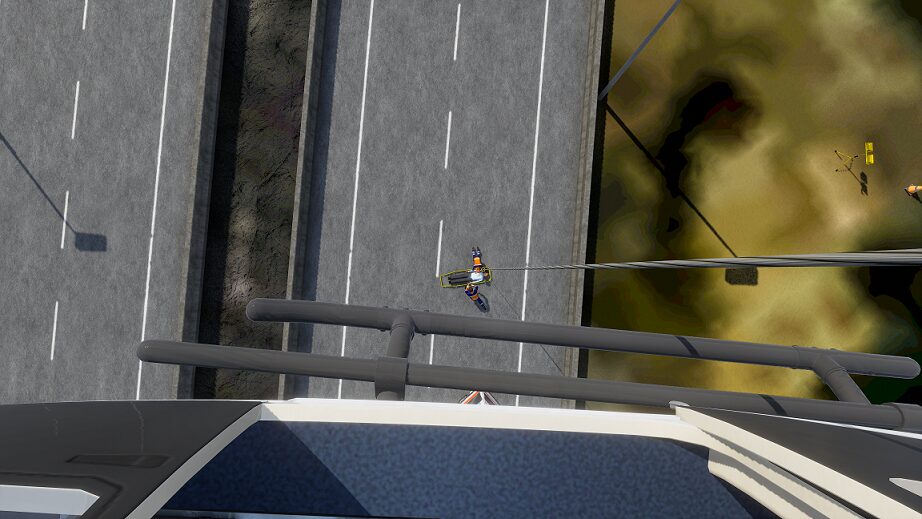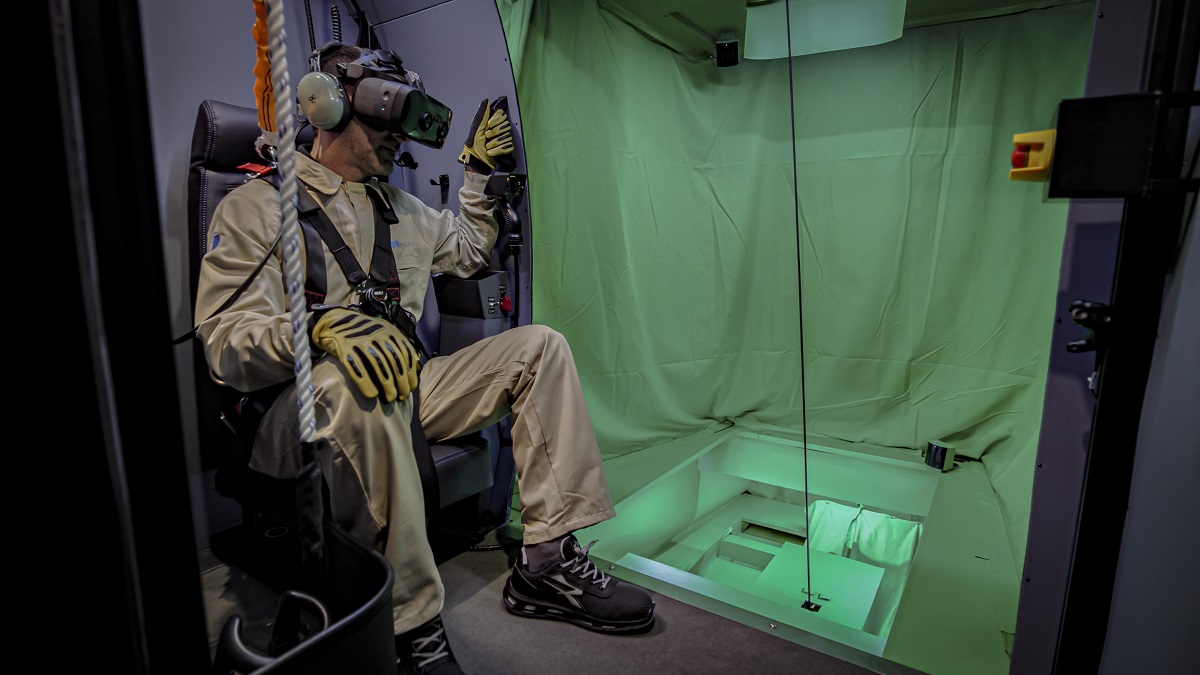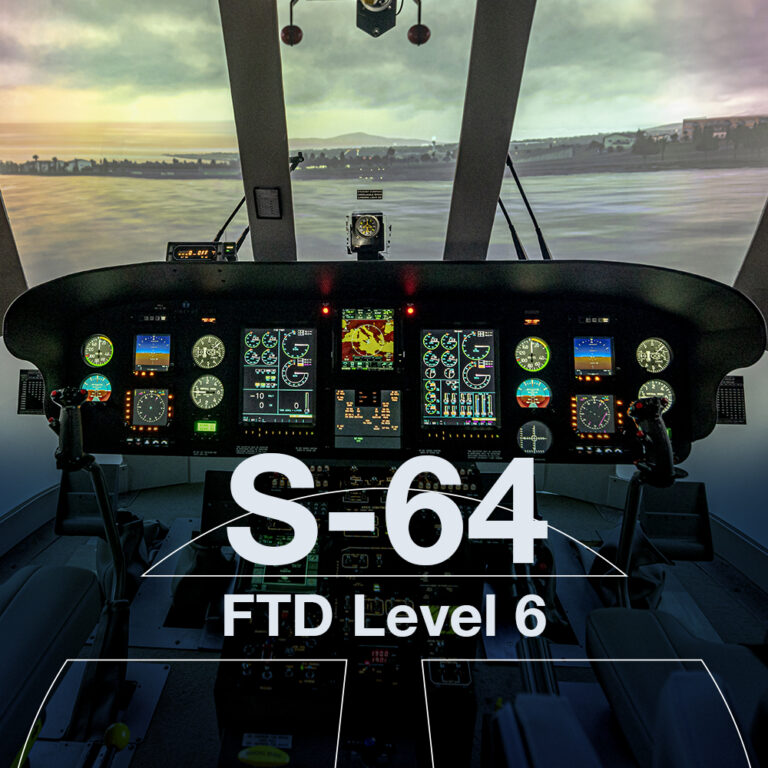In high-stakes Search and Rescue (SAR), HEMS, or Law Enforcement missions, success is not just about the pilot. It’s about the seamless, split-second coordination of the entire crew. One of the most critical and high-risk components of this is hoist operation.
For decades, the Aviation Training industry has faced a major challenge: how do you realistically train a hoist operator and a pilot together?
Training in a real aircraft remains expensive, dangerous, and difficult to repeat. Traditionally, simulation systems focused primarily on the pilot, often relegating the hoist operator to the background or requiring that critical teamwork training be performed exclusively in the actual aircraft. While several solutions for dedicated hoist operator training have now emerged on the market, Mixed Reality (MR) is Entrol’s unique commitment to achieving the highest level of realism and seamless crew coordination.
Now, Mixed Reality (MR) is solving this by fusing the physical and digital worlds, transforming a standard flight simulator into a complete, collaborative mission environment.

The core challenge: realism, risk, and phraseology
The primary goal of hoist training is to perfect crew coordination, which relies on two things:
- Realism: the operator needs to perceive depth to guide the hook, feel the pressure of the mission, and interact with a physical winch control.
- Phraseology: the mission’s success depends on standardized, clear communication. The operator becomes the pilot’s eyes, guiding the aircraft with precise verbal commands.
Training this in the real world means high operational costs, risk to the crew and airframe, and an inability to practice dangerous-but-critical emergency procedures. This is where MR simulation bridges the gap.
The solution: a shared world for pilot and crew
Entrol’s Mixed Reality Hoist Operator solution transforms a flight simulator from a pilot-only device into a multi-crew platform.
The pilot sits in the high-fidelity cockpit, while the hoist operator is in a physical, real-cabin side station. Both are connected to the same simulation.
The hoist operator’s station includes:
- MR Goggles: the operator sees their own real hands and the physical winch controls, while the MR goggles overlay the complete virtual world. They can look “out” to see the terrain, the ocean, or the rescue target, and look “in” to operate the controls.
- Physical Hoist Station: the operator works from a representative physical station, which provides crucial tactile feedback and significantly enhances the sense of immersion for the hoist operator.
- 4-Axis Winch Cable Control: a force-feedback winch control that mimics the feel and response of a real-world system.

“Best of both worlds”: physical touch, virtual immersion
The power of MR is that it delivers the “best of both worlds” for a truly effective Aviation Training experience.
- Physical Touch: the operator isn’t just holding a plastic controller in empty space. They are in a real unit, holding a winch control.
- Virtual Immersion: by looking “out” of the cabin, the operator is fully immersed. They experience accurate depth perception, vertigo, and the stress of the mission, allowing them to practice scanning and guiding the pilot just as they would in real life.

A new toolkit for the flight instructor
This technology is a game-changer for the Flight Instructor. A standard flight simulator allows an instructor to train a pilot. This new MR integration allows them to direct a full crew mission.
The Flight Instructor gains ultimate control:
- Total Scenario Control: they can create any mission, from a night-time water rescue in high seas to a complex mountain extraction in bad weather.
- Dynamic Problem-Solving: the instructor can introduce dynamic failures for the whole crew. What happens if the winch jams? What if the pilot has an engine failure during the hoist? This is impossible to train safely in a real aircraft.
- Objective Debriefing: the system records the actions, allowing the instructor to replay the mission and debrief their communication, coordination, and execution.
The true value: safer, more proficient crews at a lower cost
By integrating MR, the flight simulator delivers benefits far beyond realism.
- Unmatched Safety: Crews can practice catastrophic failures and high-risk procedures with zero danger.
- Cost-Effectiveness: Every hour spent in the MR simulator is an hour saved in a real, expensive-to-fly helicopter. This reduces fuel burn, and wear-and-tear on the fleet.
- True Proficiency: Unlike real-world training, a complex scenario can be repeated, paused, and perfected, ensuring the crew achieves mastery, not just exposure.
This is the evolution of Aviation Training. The flight simulator is no longer just a cockpit—it is a complete, integrated mission ecosystem that builds safer, more effective crews from the ground up.
Explore Entrol’s full range of advanced flight simulators and discover how we are pioneering the future of mission-critical training.



